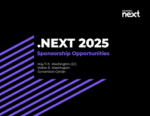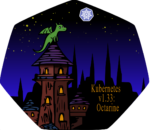
KubeCon + CloudNativeCon North America began yesterday in Chicago, IL. Like always, the event results in a number of different Kubernetes vendors making announcements about updates to their offerings.
Yesterday resulted in a number of announcements, which you can read about here, and here are a few highlights of what was announced today:
NGINX Gateway Fabric Version 1.0 released
The new platform provides Kubernetes app connectivity that is fast, reliable, and secure. It builds on Gateway API, which is an open-source API that models service networking in Kubernetes and attempts to standardize networking in Kubernetes.
Version 1.0 focuses on features that support advanced connectivity use cases at the edge, including blue-green deployments, TLS termination, and SNI routing.
“NGINX Gateway Fabric is architected to deliver future-proof connectivity for apps and services to, from, and within a Kubernetes cluster with its built-in support for advanced use cases, role-based API model, and extensibility that unlocks the true power of NGINX,” Ilya Krutov, product marketing manager for NGINX, wrote in a blog post.
Chronosphere releases Chronosphere Lens and Change Event Tracking
Chronosphere Lens is an observability solution designed to simplify observability for developers by transforming information into the “language of developers.” It generates service-oriented views; correlates metrics, traces, and events to help teams pinpoint issues; and offers simple setup.
Change Event Tracking provides developers insight into changes that have introduced problems in their infrastructure. It provides important context around these changes, leading to faster problem solving and enabling developers to be more productive.
“Chronosphere Lens simplifies observability for developers and ultimately helps engineering teams save time and reduce costs,” said Martin Mao, CEO and founder at Chronosphere. “On top of building tools that are faster, more reliable, and more scalable, we also want to reduce operational complexity for our customers. Saving end users time, effort, and cognitive overhead is just as important to us as serving faster queries and providing industry-leading uptime.”
Oracle to donate $3 million per year in compute credits to CNCF
The company has explained that it has significantly benefited from projects in the CNCF and that Kubernetes is fundamental to its Oracle Cloud Infrastructure (OCI). The compute credits will be Ampere Arm based for use in OCI.
In addition, the company also announced it will open source Jipher, which is a Java Cryptography Extension developed for meeting FIPS 140 requirements.
“Open source is in Oracle’s DNA, and for years we have been a leader, contributor, and steward for projects that drive long-lasting impact for the open source community and our customers, as well as within Oracle,” said Mahesh Thiagarajan, executive vice president, Security and Developer Platforms for Oracle Cloud Infrastructure. “We share the CNCF’s mission to make cloud native computing ubiquitous, and that requires communication, collaboration, and cooperation across the entire open source community. We look forward to continuing to be at the forefront of those efforts.”
Vitess 18 is now available
Vitess, the database clustering system for use with MySQL, introduces several new benefits in the latest update.
It now supports Vitess-managed foreign keys within the same shard, added advanced querying capabilities in the query planner, has the ability to import data with foreign key relationships and maintain those relationships, and more.
In addition, the CLI was migrated to Cobra, providing two key benefits: the ability to auto-generate reference documentation and shell completion for Vitess commands.
Kentik Kube now generally available
Kentik Kube is a new network observability solution that gives companies insight into how Kubernetes traffic is being routed. This allows them to quickly detect and solve issues, discover anomalies and compliance issues, and identify outliers in the network traffic.
“With Kentik Kube, Kubernetes is no longer a black box for network teams,” said Christoph Pfister, chief product officer at Kentik. “Now any engineer can quickly understand Kubernetes traffic – from transit cost impact, to performance problems, to embargoed countries – and see how it flows through the internet and their entire hybrid network infrastructure.”








